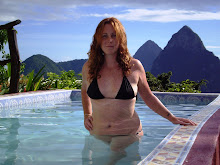The large majority of accessible shore along the coasts of the Costa Blanca are deserts, lacking biodiversity and instead primarily home to sandy and bare environments. The most notable of species is Neptune Grass (Posidonia), due to its position within the ecosystem.

(Neptune Grass; Posidonia - image courtesy of jgi.doe.gov)

However, there are areas of great natural value, with hidden gems for scuba divers and snorkelers. This posting will highlight five trails between Dénia and Xàbia, a 50 kilometre stretch of coast in the Costa Blanca north.

The Fresquito Trail in Dénia:
Four km from the Port, the Fresquito trail is good for divers and snorkelers. The trail is home to a variety of sealife; octopuses, Spiral Tube Worms, Green Spoon Worms, Moray Eel, shoals of White Bream, Damselfish and at times, reclusive rays. The trail starts with a sandy seabed and protruding rocks which give way to a wall and small chimney in the rock which can be entered before returning.

The Cullerà:
Set in a marine park, this trail is so called because of the chunk missing from the wall at the foot of the parks cliff. Diving to nine metres and following the wall, there is an entrance to a large cave, extending back around 50 metres and home to Mediterranean Slipper Lobsters, Corvina Fish and at times, Conger Eels. Species such as grouper, Gilt-Headed Bream and octopuses can also be seen in the rocks many holes and the seabed is littered with seaweed carpeted rocks.

(Common octopus - image courtesy of ask.com)
The Granadella Trail in Xàbia:
Set in a pretty cove, this trail starts with a journey through an area abundant with Neptune grass (Posidonia). Hidden here patient divers may be able to spy octopuses and Moray Eel. Halfway through the trail the scenery becomes a little monotonous as the grass gives way to sand. Points of interest return on the swim back, a small series of caves which have window-like openings to the shallows, and galleries home to Corvina fish, a variety of crustaceans and some Conger Eel. If snorkeling stick to the shallower area by the wall, home to Starfish, Peacock Wrasse and Damselfish - but please stay out of caves!
The María Claudia Trail:
This circular trail is concentrated around a small islet, which is located just past Portixol - La Mona I'liia. This boat dive is best started opposite the islet and if can be started from the beach or a boat. On the opposite side to the beach there is a small shaft at 11 metres, it ascends to seven metres and produces some picturesque light effects on the way up. Upon leaving the shaft a mixture of substrate is apparent; gently sloping hill-like shapes that at points morph in to plunging holes.
The El Tangó Trail:
Also known locally as El Pope, this trail is accessible from the beach, close to the yacht club. The beach faces southeast and to the northeast - Cape San Antonio (protected marine reserve). The shallow start to the trail is dominated with Neptune grass and home to Moray Eel and octopus. Within a short distance the depth increases and there are various nooks and crannies along the cape wall which can be explored. If snorkeling, there are small crags along the cape wall where the water is shallow and some more species can be observed; such as Salema Porgy Sea Bream, gudgeons, Mediterranean Rainbow Wrasse and sometimes, small octopus.

(Mediterranean Rainbow Wrasse - image courtesy of en.wikipedia.org)
Diving permits are necessary in this area and only a small number are granted by the local Town Halls (see below). Be warned; expect the firm hand of the law to descend if you are found with any instrument (to hand or on a boat) that can be used to fish for or remove marine species. Also, if snorkeling, for safety, mark your position with a buoy.
For more information contact:
Tourist Info Dénia: http://www.denia.net/uk/index.html
Tourist Info Xàbia: http://www.xabia.org/
Here are a couple more interesting locations to try out, I'll keep the suggestions coming all year round; you might want to buy a wetsuit :)
- Scuba diving at Los Arcos de Benidorm
- Snorkeling in Fustera Benissa, by the "Aula del Mar" in Benissa

No comments:
Post a Comment